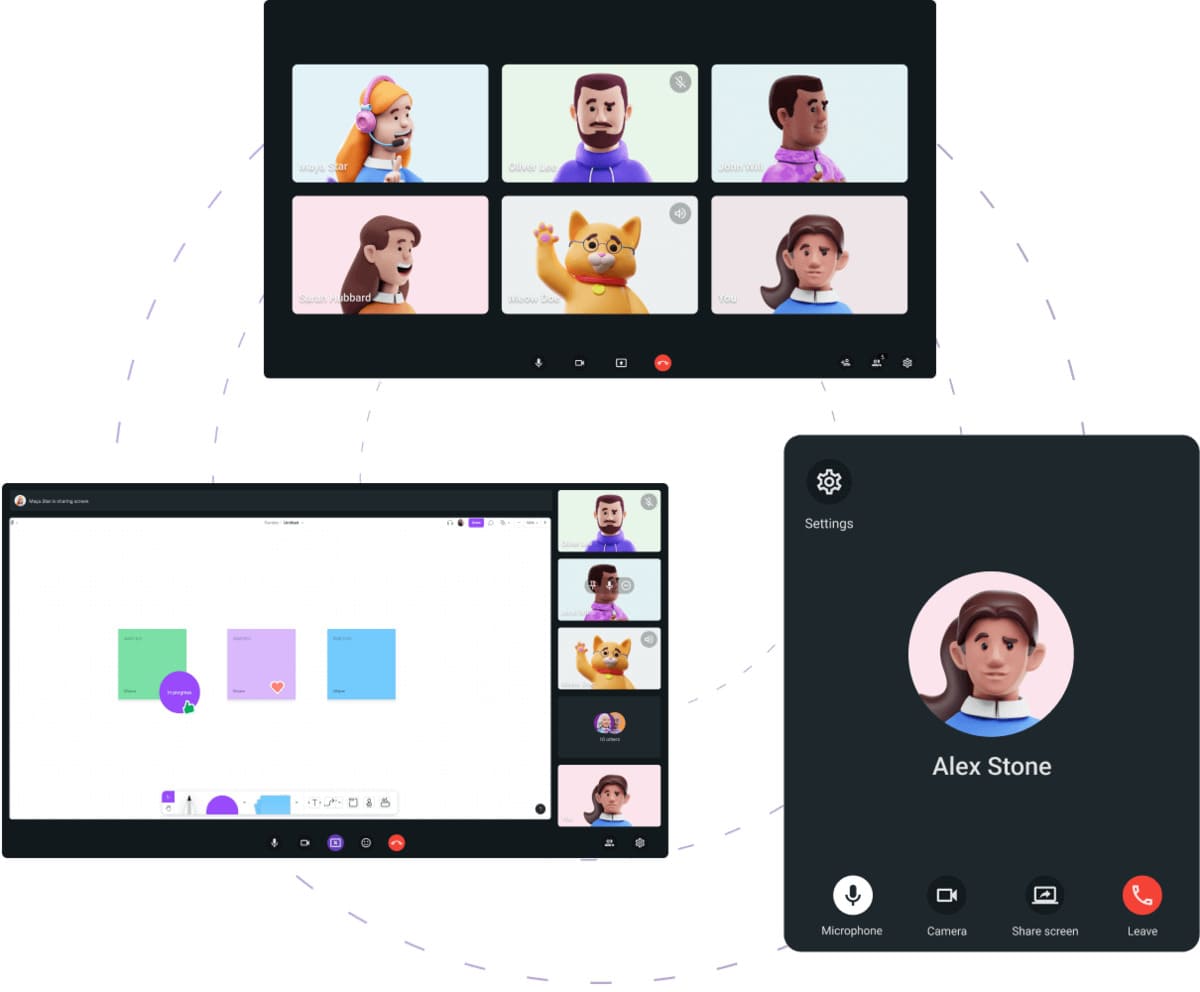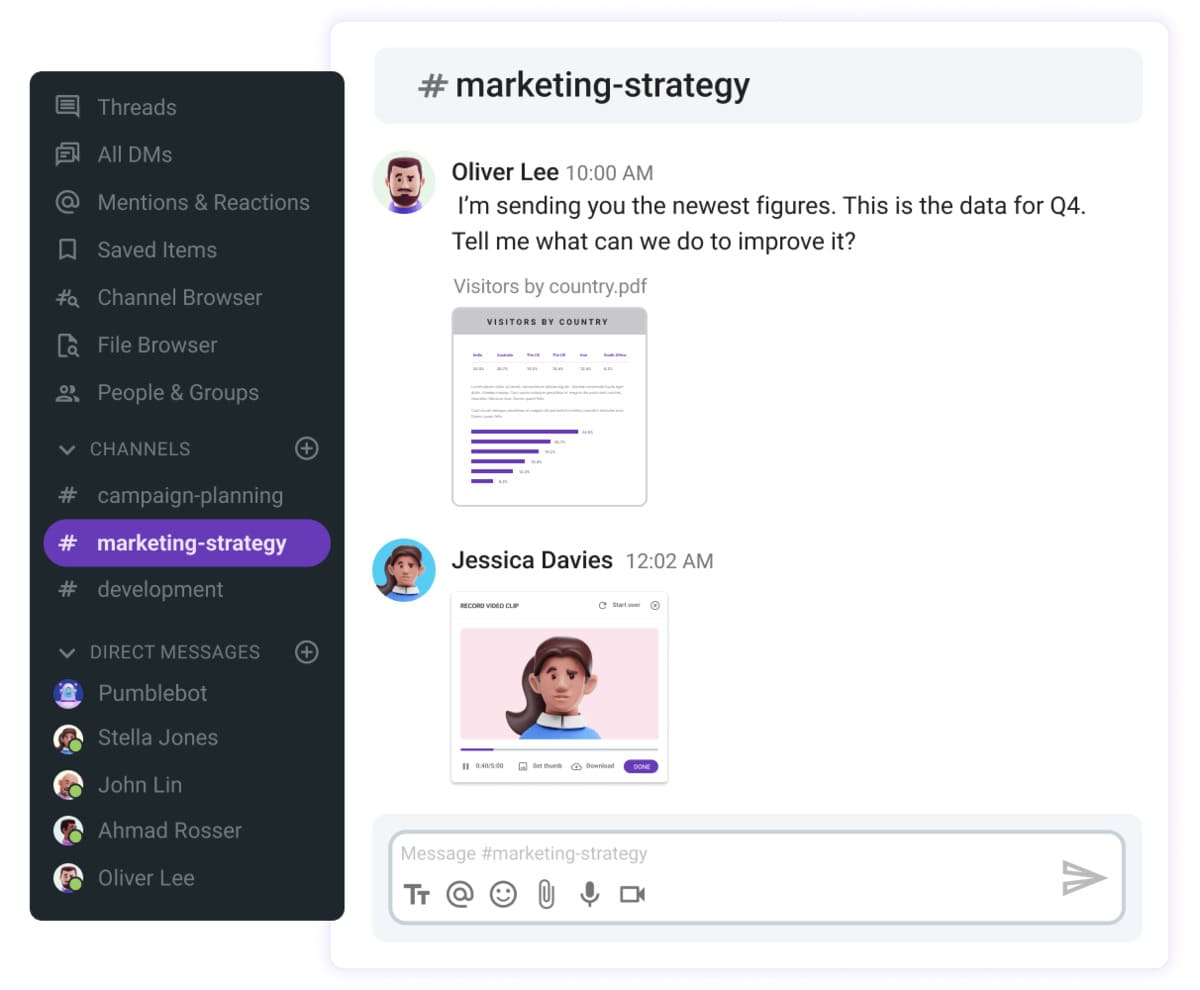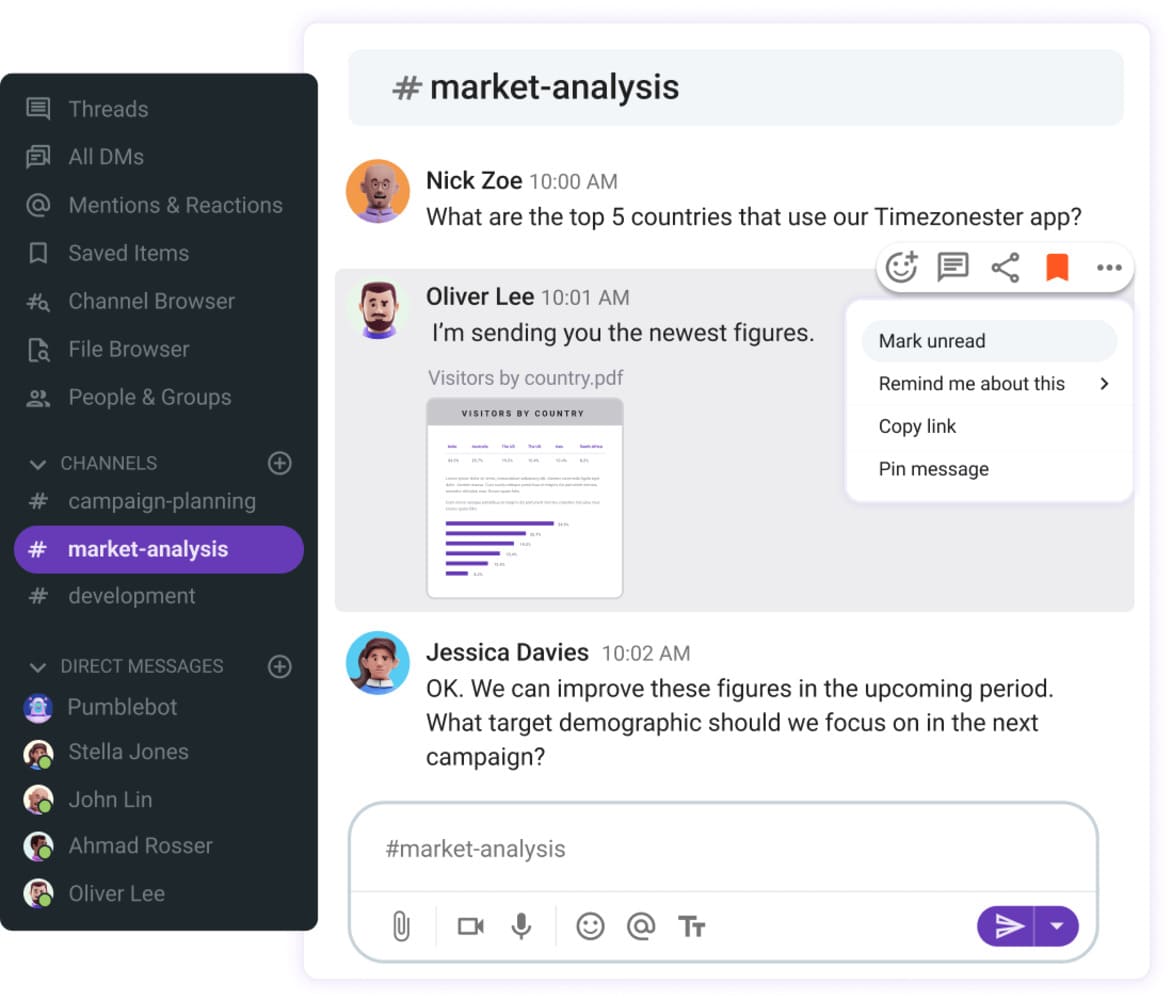Ever felt like you and your coworkers don’t speak the same language? They keep messaging you outside your work hours, and there’s no cohesion when you collaborate.
With a team working agreement, you can not only avoid these problems but also improve productivity and engagement.
We’ll walk you through every step of the way and:
- Define what a team agreement is,
- Explore its benefits,
- See how you can create one with your team, and
- Share a customizable template.
Let’s start.

Table of Contents
What is a team working agreement?
A team agreement outlines the guidelines a team follows, from deadlines and expected behavior to communication methods and roles.
All team members collaborate on creating this document, using clear language and covering every facet of their work.
The purpose of a team agreement is to:
- Align everyone with organizational goals,
- Establish communication standards,
- Specify repercussions,
- Streamline conflict resolution,
- Help new team members find their footing,
- Optimize decision making, and so on.
At its core, a team agreement creates an atmosphere that caters to each team member’s strength. When you’re aware of your coworker’s capabilities, it opens doors to new collaboration opportunities and eliminates second-guessing.
But, does having a team agreement bring additional benefits? Let’s find out.
How to create a team agreement
Coming to a consensus about how to best work together can get messy pretty quickly without a plan. Thus, we’ve simplified the process into 5 basic steps.
They’ll help you discover the best ways to grow as a team without wasting too much time on lengthy meetings.
#1 Organize a team meeting and ask attendees to prep beforehand
The first step is scheduling a meeting that caters to everyone’s location and time zone. In most cases, it’s most convenient to settle on an app like Pumble, our business communication tool, as it has both chat and video conferencing features.

You can share a list of questions with your team a few days before the meeting. Some of the questions could be::
- What’s your name, and where do you usually work? ( i.e., from the office, from home)
- What are your daily working hours?
- In what kind of environment do you prefer to work?
- What’s your preferred method of receiving and giving feedback?
- What other details would you like to share about yourself?
The answers give the team more insight into the overall dynamics and how they can work together as a cohesive unit.
Before attendees start sharing their answers, remind the group to:
- Keep an open mind,
- Eliminate possible distractions (for example, turning on their webcam and activating Do Not Disturb mode),
- Refrain from interrupting each other, and
- Practice active listening so that everyone can contribute to making the team agreement.
After the group answers the questions, you can share your screen and open a blank document. As the meeting progresses, this doc will eventually become your team working agreement.
Host productive team meetings in Pumble
#2 Discuss current challenges and future goals
One of the most important parts of planning for the future is overcoming current hurdles.
Are there any challenges team members want to share with the group?
How have these issues affected their workflow, and what can we do to improve the situation?
After agreeing on how the team can learn and grow together, you can go on to discuss long-term objectives, such as:
- Communication standards,
- Problem escalation management, and
- Meeting management.
Some of the questions you should cover may include:
- Are there any additions or changes you’d like to see in our internal communication plan?
- What are the outcomes we expect from our meetings?
- What tools do we use for conducting meetings?
- How do we determine whether attendance is necessary?
- What are our options when we are stuck on an issue or decision? Who do we involve next if we can’t reach a consensus?
- When do you think we should schedule a review meeting?
Don’t worry if not all answers are straightforward. When several people come together, there are bound to be some disagreements. Remember that the purpose is to reach a compromise that works well for all team members. Should any issues continue, you can revisit them at your team agreement review meetings.
#3 Discuss what you’ll include in the team agreement
The manager spearheading the meeting could summarize the key points of the discussion, but that would make the whole process less collaborative.
Instead, give your team a few minutes to brainstorm and think of concise catchphrases that illustrate the critical points of your team agreement. This activity will make the main statements more memorable as team members formulate them using their own words.
#4 Share the document for easy access
After the meeting, once you — or the appointed meeting minute taker — have finalized the document, it’s time to share the file with the team.

If you have a dedicated channel for work updates, you can share the file there. Better yet, you could pin the message so everyone opening the channel can easily spot the work agreement file.
You may also remind your team they can save the message by tapping the bookmark icon for even easier access. After they do so, they’ll be able to find the saved post in their sidebar.

#5 Schedule a review meeting
Ideally, the following review meeting should occur within the next 6 months to a year. That doesn’t mean you have to keep looking over your shoulder to check whether the date is approaching.
Simply schedule a message in your team communication app, and the reminder will show up in the channel at the selected date and time.

Never miss a team meeting with Pumble
Team agreement examples
Let’s look at some examples of team agreements and see what they look like in action.
| Topics | Examples of team agreements |
|---|---|
| Communication | We appreciate and weigh the input of each team member before voting on a decision. The purpose of constructive criticism is to foster better collaboration. When others speak, we actively listen and create ample space for team members to share thoughts and ideas. We use unambiguous language and ask for clarification when necessary to avoid misunderstandings. We use official communication channels to exchange important and confidential information. |
| Accountability | Each team member has autonomy over how they complete their tasks and assumes responsibility for the outcomes. Instead of allowing issues to escalate, we search for solutions as a group. |
| Availability | We respect each other’s working hours and use them to better organize collaborative efforts. We share updates about delays, extensions, and deadlines in a timely manner. We don’t expect an immediate response to communication outside of a team member’s working hours. We use status updates in our communication app to let others know when we will be available. |
These examples are merely a starting point. Your agreement should cover areas relevant to the work of your organization and team.
Team agreement template
We’ve gone over every nook and cranny of a team agreement.
But, if you want to get a headstart at your next meeting, we’ve created this handy template. It covers areas such as communication and collaboration processes, which are essential for any team hoping to push boundaries. It’s also easily customizable, so you can tweak it according to your team’s needs.
🔽 Download the team working agreement template
Benefits of a team agreement
You might be wondering whether crafting a team agreement is necessary. It’s actually one of the biggest investments you can make in your team. Although the concept is fairly simple, its impact on team dynamics and productivity is profound.
Here are some key benefits that make it indispensable for any team.
#1 It helps coordinate different working styles
No two people are the same. So, it’s natural that we do our best under different circumstances.
For example, you may come up with excellent ideas while talking with others. Yet, your coworker might prefer to brainstorm independently before clueing in the rest of the team. Both of these approaches are valid and can lead to good work — provided team members are aware of each other’s preferences.
And, that’s exactly what a team agreement does. It makes us more familiar with the preferred working styles of our colleagues and minimizes the chance of interpersonal conflict.
#2 It clarifies expectations
Providing sufficient context is key when establishing expectations with employees.
Once you all sit down to craft your team agreement, make sure to include the “why” behind the organization. Details about how everyone’s contributions fit into the broader picture not only strengthen engagement but also promote a deeper commitment to the team and shared goals. With all of this information written down, employees will have a convenient place to check for clarity and context.
💡 Pumble Pro Tip
In case you’re looking for tips on how to communicate expectations, check out this blog post:
#3 It enhances team communication
The latest communication statistics confirm what most workers have long suspected — poor communication deeply impacts employee productivity and job satisfaction.
Unexpected interruptions and too many choices are 2 common culprits. For example, if your company uses email and an IM app for internal communication, you never know when the next notification is coming.
Not knowing how work will be communicated creates a sense of unease, but your team doesn’t have to give in to this feeling.
Because team agreements clarify internal communication policies, no one is ever in the dark about which communication channel to use.
#4 It helps create psychological safety in the workplace
Imagine speaking up during a video meeting, and the other attendees laugh at your suggestion. That is a prime example of a lack of psychological safety.
In environments where we fear ridicule and dismissal, we’re more likely to experience:
- Burnout,
- Fear of expressing our thoughts,
- Low morale,
- Limited creativity, and
- Reduced work quality.
Team agreements often serve as mechanisms that bolster psychological safety in the workplace. They outline how and when teams communicate and define expectations and boundaries.
Additionally, when an employee notices someone deviating from the agreement, they can raise the issue at the next review meeting. This way, small infractions will be resolved quickly and won’t affect team dynamics in the long run.
With Pumble, you don’t have to agree to disagree
A team agreement is a stepping stone in the right direction to reaching business milestones. But, all your efforts need a sturdy foundation, and Pumble is the thread that’ll keep everything together.
From secure file sharing to a handy search function, Pumble has everything to meet your needs. And, with customizable notifications and integrations, it’s the space teams use to stay connected and productive.
See for yourself why high-performing teams use Pumble.








